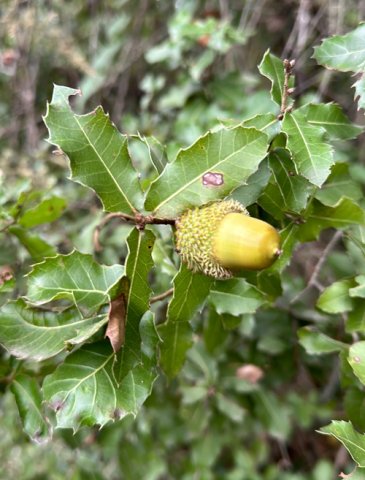During the fall season, squirrels, jays, and other creatures forage for oak nuts, or acorns, in the woods. The fallen acorn is supposed to grow into a new oak tree. However, most of the time, since these nuts are a valuable and rich food source, wildlife will have disposed of them before the seed has a chance to germinate. Raw acorns are poisonous to cattle, horses, and dogs. They can be toxic to us as well, as they contain tannins but they have been part of the staple food of several communities across the world, from Korea, North Africa, Italy, Spain, all the way to the Americas. Some roast it, others press it into oil, and some simply use them as decorations. White oak tree acorns have a sweet taste, whereas red oak tree acorns are usually bitter. When you are foraging for these nuts, make sure you don't collect bad ones. They will be discolored, have dark spots on the side, or still be firmly attached to their caps. Make sure you gather the nuts with your hands. This will allow you to assess if they are good: bad ones are lighter. After you crack the nuts open, you have 3 different leaching ways: cold leaching, hot leaching, and chemical leaching. The process is to remove the tannins. Once they are leached, you can leave them to dry or roast them. Then grind them to make flour or coffee. It is to be noted that acorns might improve gut health and are loaded with antioxidants such as vitamins A and E.
Celtic traditions consider acorns to be symbols of luck, strength, fertility, rebirth, and vitality. Druids often believed acorns conveyed maturity and wisdom and had spiritual powers as well as prophetic qualities. The acorn starts as a tiny nut that can grow into a massive oak tree. Hence, it teaches us about perseverance, potential, and the importance of going after our aspirations. In Ancient Greece, the oak tree was sacred to Zeus, and priestesses used to interpret the rustling of the leaves as messages from the God of the sky and thunder. In Norse mythology, Scandinavians placed acorns on their window sills during big storms to show respect to Thor and ask for his protection from lightning. Additionally, Vikings built their ships and homes from oak trees. Native Americans use acorns as a primary food source and as a protective charm in the form of amulets. In Medieval Europe, acorns were used as a food source and thought to ward off illnesses. Furthermore, because it can take sometimes two decades for an oak tree to mature, acorns symbolize patience and resilience. Traditional Chinese medicine makes use of acorns to treat diarrhea and hemorrhoids. Acorn oil is commonly known to treat dry skin conditions.
Happy foraging 🌱🌱

